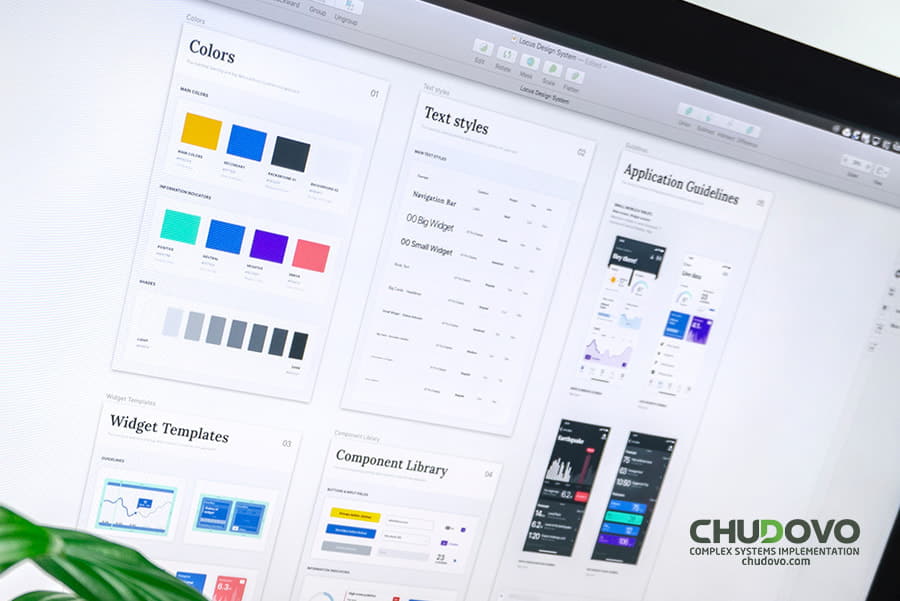15 Best Languages For Rapid Web Development in 2023
Are you a developer or aspiring to become one? If so, I’m happy to inform you that your web development game is about to change! In the evolving world of web development, one must recognize the importance of programming languages. They are the backbone of web applications, software, and mobile development. Each year, new programming languages emerge, and old ones become obsolete.
As we get into the thick of 2023, it’s time to dive deeply into the 15 best languages for rapid web development. These languages facilitate seamless web development, ensure high performance, empower mobile applications, and much more. So, whether you are a seasoned developer or a newbie, this article will pique your interest.
So, buckle up and get ready to explore the world of programming languages for web development! But before we do that, let’s discuss why choosing the right programming language is crucial for rapid web development.
Table of content

Why choosing the right programming language is important for rapid web development
Choosing the right programming language is critical to achieve rapid web development. It can affect the performance, scalability, and even the security of your website or web application. A good language choice like the one being employed at Chudovo can ensure seamless web development, while a bad one can slow down the process and lead to costly mistakes. The following are some of the reasons why choosing the right programming language is essential for rapid web development:
- Efficiency: Choosing the right programming language can make a significant difference in the efficiency of your web development projects. A language that is easy to learn, has a large community, and a vast array of resources can speed up the development process and save time.
- Scalability: Web development projects must be scalable to accommodate future growth and changes. Choosing a language that can scale seamlessly and handle large traffic volumes is essential.
- Compatibility: Compatibility with other software and technologies is crucial when developing web applications. Choosing a language that is compatible with multiple platforms and devices can save time and resources.
- User Experience: The programming language you choose can impact the user experience of your web application. A language that allows for rapid development of user-friendly interfaces can enhance the overall user experience.
Now that we understand the importance of choosing the right programming language, let’s dive into the article properly.

15 Top Languages for Web Development in 2023
The following is our compilation of the 15 best languages for web development in 2023, including their features, pros and cons, and real-world use cases:
1. JavaScript
JavaScript is a dynamic programming language that creates interactive and responsive web pages. It is the backbone of web development and is supported by all major web browsers. It is a versatile language that can be used for front-end and back-end development, making it one of the most popular web development languages today.
Features:
- Supports object-oriented programming, functional programming, and imperative programming paradigms.
- Has a vast library of frameworks and tools, such as React, Angular, Vue, and Node.js.
- Provides excellent support for DOM manipulation, enabling the creation of dynamic and interactive web pages.
Pros:
- Versatile and can be used for both front-end and back-end development.
- Supported by all major web browsers.
- Has a large and active community of developers.
Cons:
- It can be difficult to debug due to its dynamic and flexible nature.
- Its performance can sometimes be a concern, especially when handling large amounts of data.
Use cases:
- Building interactive web applications, such as social media platforms and e-commerce websites.
- Creating real-time web applications, such as chat applications and multiplayer games.
2. HTML
HTML is a markup language used to create the structure and content of web pages. It is the foundation of web development and is supported by all web browsers. HTML provides a simple and straightforward way to create web pages, making it an essential language for any web developer.
Features:
- Uses a markup syntax to define the structure and content of web pages.
- Provides a wide range of tags and attributes to create various elements, such as text, images, links, and forms.
- Is compatible with all web browsers.
Pros:
- Simple and straightforward to use, making it an essential language for web development.
- Compatible with all web browsers.
Cons:
- Does not provide dynamic functionality, making it less useful for complex web applications.
- It is not a programming language, meaning it cannot perform complex calculations or operations.
Use cases:
- Creating the structure and content of web pages.
- Building the foundation of a web application.
3. Python
Python is a universal programming language for web development, scientific computing, data analysis, artificial intelligence, and more. It is a high-level language that is easy to read and write, making it a popular choice for developers of all skill levels.
Features:
- Uses a simple and readable syntax, making it easy to learn and use.
- Supports multiple programming paradigms, including object-oriented, functional, and procedural programming.
- Has a large and active community of developers, providing access to a vast library of modules and frameworks.
Pros:
- Easy to learn and use, making it an ideal language for beginners.
- Versatile and can be used for a wide range of applications.
Cons:
- It can sometimes be slower than other languages due to its interpreted nature.
- It can sometimes be less efficient than lower-level languages due to its high-level abstractions.
Use cases:
- Building web applications using frameworks like Django and Flask.
- Creating machine learning and artificial intelligence applications using libraries like TensorFlow and Keras.
4. Ruby
Ruby is a dynamic, object-oriented programming language popular among web developers for its simplicity and readability. It is often used for developing web applications and has a wide range of frameworks and tools that make development quick and easy.
Features:
- Has a vast library of frameworks and tools, such as Ruby on Rails and Sinatra.
- Provides excellent support for metaprogramming, enabling the creation of code that can modify itself.
Pros:
- Easy to learn and use, making it an ideal language for beginners.
- Has a built-in garbage collector, making it easy to manage memory allocation.
Cons:
- It can sometimes be slower than other languages due to its interpreted nature.
- Has a smaller community compared to languages like Python and JavaScript, which can limit the availability of libraries and tools.
Use cases:
- Building command-line utilities and scripts.
- Developing plugins and extensions for other applications.
5. Java
Java is a popular programming language for developing web applications, mobile applications, and desktop applications. It is a high-level language known for its stability, security, and scalability.
Features:
- Has a vast library of frameworks and tools, such as Spring and Hibernate.
- Has a robust and well-documented API, making it easy to use and develop.
Pros:
- Known for its stability, security, and scalability, making it an ideal language for large-scale applications.
- Provides excellent support for web development with frameworks like Spring and Struts.
Cons:
- It can sometimes be slower than other languages due to its compiled nature.
- Has a steeper learning curve than other languages but offers developers more control and customization options.
6. C++
C++ is a high-performance, object-oriented programming language that was developed as an extension of the C programming language. It provides low-level memory manipulation and high-level abstractions, making it a universal language for software development and game development.
Pros:
- High-performance: C++ is a compiled language with excellent performance,
- It is platform independent, allowing developers to write code once and run it on various operating systems and devices.
Cons:
- Steep learning curve: C++ has a steeper learning curve than other programming languages, making it more challenging for beginners to learn.
- More complex syntax: C++ has a more complex syntax than other programming languages.
Use Cases:
- Game development: C++ is widely used for game development due to its high performance and ability to control the hardware.
- System programming: C++ is also used for system programming, allowing for more direct hardware control and optimization.
7. Rust
Rust is a new programming language that has gained popularity recently due to its focus on safety, performance, and concurrency.
Features:
- Memory safety: Rust has a unique memory management system that guarantees memory safety, eliminating common errors such as null pointers and dangling pointers.
- Great tooling: Rust has excellent tooling, including a package manager, build system, and integrated development environment (IDE).
Pros:
- High performance
- Extensive standard library: Rust has a large and growing standard library, providing developers with a wide range of functionality.
Cons:
- Steep learning curve
- Smaller community: Rust has a smaller community than more established programming languages like Python or JavaScript.
Use Cases:
- Web development: Rust can be used for developing high-performance web applications that require safety and concurrency.
- Network programming: Rust can be used for creating network applications that require high performance and safety.
8. Kotlin
Kotlin is a statically-typed programming language developed by JetBrains, designed to be more concise, expressive, and safer than Java. It is interoperable with Java and can be used for Android app development, web development, and server-side development.
Features:
- Concise syntax: Kotlin’s concise syntax reduces the boilerplate code required for development tasks.
- Null safety: Kotlin has a null safety feature that prevents common runtime errors caused by null references.
Pros:
- Interoperable with Java: Kotlin can be used in existing Java projects, allowing developers to take advantage of its features without starting from scratch.
- Suitable for Android app development: Kotlin is the preferred language for Android app development and is officially supported by Google.
Cons:
- Limited to JVM-based platforms: Kotlin is primarily used for JVM-based platforms like Android and Java, which limits its usefulness for developers working on other platforms.
- Immature ecosystem: Kotlin is a relatively new language, and its ecosystem is still developing, which means that there may be limited resources and support available compared to more established languages.
Use cases:
- Web development: Kotlin can be used for web development using frameworks like Ktor and Spring.
- Server-side development: Kotlin can also be used for server-side development using frameworks like Ktor and Spring.
9. TypeScript
TypeScript is a superset of JavaScript developed by Microsoft, designed to add optional static typing and other features to JavaScript. It is open-source and can be used for web development, server-side development, and desktop application development.
Features:
- Object-oriented programming: TypeScript supports object-oriented programming concepts like classes, interfaces, and inheritance.
- ES6 support: TypeScript supports the latest ECMAScript standards and can be used with modern JavaScript frameworks.
Pros:
- Suitable for large projects: TypeScript is particularly useful for large projects with many developers, as it helps catch errors early and improves code readability and maintainability.
- Interoperable with JavaScript: TypeScript can be used with existing JavaScript projects, allowing developers to take advantage of its features without starting from scratch.
Cons:
- Overhead: TypeScript adds some overhead to development tasks.
- Tooling: Although TypeScript provides enhanced tooling, it can sometimes be challenging to set up.
Use cases:
- Large-scale web applications: TypeScript is ideal for developing large-scale web applications that require robust and maintainable code.
- Enterprise applications: TypeScript’s scalability and maintainability make it suitable for developing enterprise applications.
10. Go
Go, also known as Golang, is a programming language developed by Google. It is a statically typed language that offers high performance and scalability. Here are some of its key features:
Features:
- Concurrency: Go provides built-in concurrency support, making it easier to write code that can handle multiple tasks simultaneously.
- Garbage collection: Go has a garbage collector that automatically frees up memory, making it easier to write code that is less prone to memory leaks.
Pros:
- Ideal for high performance application
- Scalability: Go is highly scalable and can handle large-scale applications with ease.
Cons:
- Lack of generics: Go does not support generics, making writing reusable code challenging.
- Steep learning curve: Go can be difficult to learn, especially for developers who are used to dynamic typing.
Use cases:
- Network applications: Go’s performance and concurrency make it ideal for developing network applications.
- Cloud-based applications: Go’s scalability and performance make it suitable for developing cloud-based applications.
11. PHP
PHP is a popular server-side scripting language for developing dynamic web pages and applications. It is open-source and has a large and active community of developers.
Features:
- Large community: PHP has a large and active community of developers, which means a vast amount of resources and support is available.
- Platform independence: PHP runs on multiple platforms, including Linux, Windows, and macOS.
Pros:
- Suitable for prototyping: PHP is ideal for rapid prototyping of web applications, thanks to its simplicity and ease of use.
- Cost-effective: PHP is open-source and free, making it a cost-effective choice for web development projects.
Cons:
- Security vulnerabilities
- Inconsistent function names
Use cases:
- CMS: PHP is commonly used for building content management systems (CMS), such as WordPress, Drupal, and Joomla.
- E-commerce: PHP is often used for developing e-commerce websites and applications, such as online marketplaces and shopping carts.

Certified engineers
Convenient rates
Fast start
Profitable conditions
Agreement with
EU company
English and German
speaking engineers
12. CSS
CSS (Cascading Style Sheets) is not exactly a programming language. Still, it is a fundamental component of front-end web development. CSS is responsible for styling and layout, and it can be used in conjunction with HTML to design visually appealing websites.
Features:
- Ability to control how web pages are displayed on different devices
- Flexibility in creating responsive designs.
Pros:
- Easy to learn and use
- Provides a lot of flexibility in designing web pages
Cons:
- Limited functionality
- It can be challenging to manage large projects
Use Cases:
- Front-end development
- Creating visually appealing websites
13. C#
C# (pronounced C Sharp) is a modern, object-oriented programming language developed by Microsoft. It is mainly used for developing Windows desktop applications but is also a popular choice for web development.
Features:
- Integration with the .NET framework, which provides a vast library of pre-built functions, and
- It supports garbage collection, which automates memory management.
Pros:
- Easy to learn and use
- Provides fast and efficient performance
Cons:
- Limited cross-platform capabilities
- Requires the .NET framework to be installed
Use Cases:
- Windows desktop applications
- High-performance web applications
14. Dart
Dart is a client-optimized programming language developed by Google and is widely used for building mobile and web applications.
Features
- Support reactive programming, which allows for fast, responsive user interfaces.
- Built-in support for unit testing, making it easy to test and debug code.
Pros:
- Fast and efficient performance
- Good for rapid development
Cons:
- Limited support for third-party libraries
- Requires compilation before deployment
Use Cases:
- Mobile applications
- Web applications requiring high performance
15. Lua
Lua is a lightweight programming language popular for game development and prototyping. It is often used as a scripting language for video game engines.
Features:
- Ease of use and highly flexible.
- Ability to be embedded into other applications.
Pros:
- Easy to learn and use
- Lightweight and fast
Cons:
- Limited functionality
- Not suitable for large-scale projects
Use Cases:
- Game development
- Image software development

Conclusion
In conclusion, the world of web development is constantly evolving, and it’s crucial to stay up-to-date with the latest trends and technologies. With so many programming languages available, choosing the right one for your project can be overwhelming. However, you can make an informed decision by considering your specific needs and goals and the strengths and weaknesses of each language.
Ultimately, the best language for web development will depend on the specific requirements of your project. Front-end development, for example, will require different languages than back-end or mobile app development. Additionally, the size and skill set of your development team may also impact your language choices.
By leveraging the expertise of dedicated teams, prototyping, and development tools, you can create seamless web applications with high performance and functionality. With these, you can bring your web development vision to life in 2023 and beyond.
FAQs
What languages are used for web development?
There are several languages for web development, but some of the most popular ones are JavaScript, HTML, Python, Ruby, and CSS. Each language has its own strengths and weaknesses, and it’s important to choose the right language depending on the project’s requirements.
What is front-end web development, and what are the languages?
Front-end web development involves the visual aspects of a website, including layout, design, and user interface. The languages used for front-end web development are HTML, CSS, and JavaScript. HTML provides the structure of the website, CSS is used for styling and layout, and JavaScript adds interactivity and dynamic elements.
What are the best languages for rapid web development?
The top languages for rapid web development are JavaScript, Python, Ruby, and PHP. JavaScript is widely used for both front-end and back-end development, while Python is known for its ease of use and quick development time. Ruby is great for prototyping and web application development, while PHP is ideal for building high-performance websites and mobile applications.
Do you want to create your web project from scratch using rapid web development languages in line with your enterprise objectives and corporate image? If yes, contact us now to get started!



